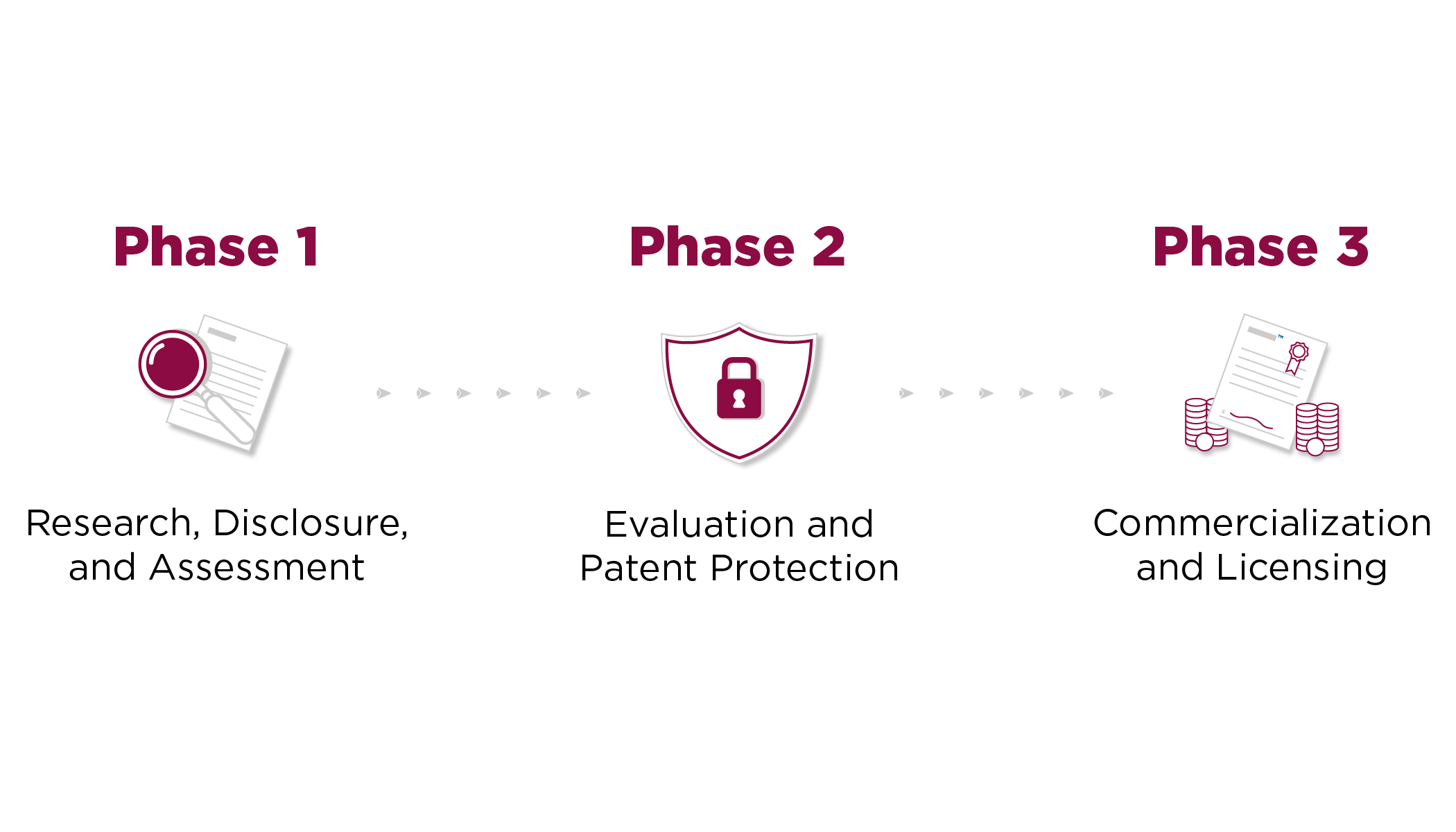Intellectual Property
Arrowhead Center’s Office of Intellectual Property & Technology Transfer (IP Office) protects, manages, and commercializes NMSU innovations across disciplines, ensuring research translates into real-world impact through legal protection, compliance, and community use.
Eligibility
We serve NMSU faculty, staff, and researchers seeking guidance on intellectual property, research contracts, or technology commercialization to expand the reach and impact of their work.
Patricia Marquez Knighten
Program Director
pmk@nmsu.edu
Protecting and Promoting World-Changing Discoveries
Intellectual Property & Technology
The Office of Intellectual Property & Technology Transfer, the IP Office, within Arrowhead Center protects, manages, and commercializes the creative products of New Mexico State University. Since our opening in 2005, we have aided the success of research from a wide range of NMSU departments and disciplines, from engineering and chemistry to agriculture and environmental science. Our focus is on use and impact: We help to shape how NMSU innovations are used and deployed in the wider community.
The IP Office is responsible for administering NMSU’s Intellectual Property (IP) Policies and for managing NMSU’s IP through activities such as legal protection, compliance with federal guidelines and the Technology Transfer of IP, mostly via commercial licenses. We also provide support for NMSU community members with questions or concerns that arise around research contracts and relationships with external organizations as it relates to IP ownership and use. .
Arrowhead Center’s professional staff members are a resource for faculty and research groups – both to answer questions and to explore ways to expand the reach and impact of research and innovations.
Program Details
It starts with an Idea...
Observations, experiments or other activities by members of the academic community can lead to Inventions. Some of these Inventions have potential for commercialization. The IP Office assists with the protection of Inventions with the goal of commercialization and transfer into the marketplace. This happens in eight steps, within three primary phases: (1) Research, Disclosure, and Assessment; (2) Evaluation and Protection; and (3) Commercialization and Licensing. New Inventions may go through all phases and steps in the process or, for a variety of reasons, the IP management process may stop, change or end at any step. The following gives a brief overview of the IP management of Inventions.

Phase 1 - Research, Disclosure, and Assessment
-
Formal Submission of IP:
When intellectual property is developed at NMSU, the Inventor – with their department head or equivalent and/or vice president or dean, or with their supervisors’ approval – must submit an Invention Disclosure Form (IDF) describing the Invention to the IP Office for evaluation. Because Public Disclosure may jeopardize the ability and eligibility to protect the IP, the Inventor should disclose the Invention to the IP Office prior to making any Public Disclosure. To submit an Invention Disclosure, download the form below.
-
Consultation with the IP Office:
As soon as possible, and at least 60 days before any public disclosure of inventions, complete an Invention Disclosure, which provides basic information on the technical specifications of the invention, along with testing results, potential commercial applications, and financial sponsorship. You may submit an Invention Disclosure online at the link above or as a hardcopy to the Office of Intellectual Property & Technology Transfer, located in Academic Research A.
-
Determination of IP Ownership:
The IP Office evaluates the IDF and makes the determination if IP is University IP or Individual IP. Factors include, but are not limited to, course and scope of employment, use of university resources, Work for Hire and Sponsoring Agency.
_
Phase 2 - Evaluation and Patent Protection
-
Election of Title:
The IP Office evaluates the Invention’s eligibility for IP protection and potential for commercialization. The university, through its Assignee, will Elect Title with the intention to advance the Invention through the technology transfer process.
-
Provisional IP Protection:
The IP Office, with support from outside Patent counsel, takes steps to obtain legal protection for an Invention through filing a Provisional Patent Application. This begins “Patent pending” status of an Invention.
-
IPAC Review:
The IP Office evaluates the IDF and makes the determination if IP is University IP or Individual IP. Factors include, but are not limited to, course and scope of employment, use of university resources, Work for Hire and Sponsoring Agency.
-
Non-Provisional IP Protection:
The IP Office, with support from outside Patent counsel, takes steps to advance legal protection for an Invention through filing a Non-Provisional Patent Application.
_
Phase 3 - Commercialization and Licensing
-
Commercialization:
The IP Office oversees and tracks the technology transfer process and, with support from outside Patent counsel, manages and administers the legal, financial and business documentation. The IP Office, Inventor, and Arrowhead Center program staff work towards outlining a commercialization roadmap and business model to seek funding and investment partnerships, which may include starting new companies. The IP Office works with Assignee to distribute Net Earnings generated from commercializing the University IP, when realized.
_



